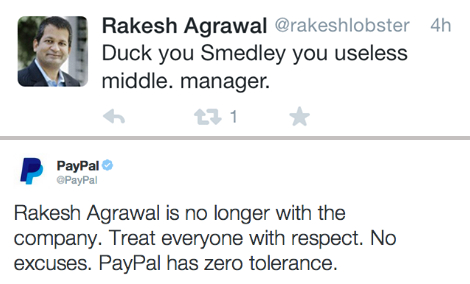“It takes 20 years to build a reputation and five minutes to ruin it. If you think about that, you’ll do things differently.” – Warren Buffett
It starts with one snarky tweet, or maybe an angry post in the /r/rage subreddit. The next thing you know, your inbox is choked with Google alerts, your company is trending on Twitter (and not in a good way), Buzzfeed is snickering at you, your PR director is blowing up your phone, and your boss needs you in the conference room right now.
The Internet vigilante justice mob has gotten out its pitchforks and torches, and is out for blood…yours. So, what do you do now?
In Part I of this series, we looked at a few of the more spectacular social media fails in recent memory. Now, it’s time to talk about what happens when trouble turns up on your brand’s doorstep. With the viral nature of the socialverse, even small missteps have the potential to spiral up into a full-blown social media crisis. However, that doesn’t mean you can’t defuse the situation or better yet, turn it into an opportunity for engagement with your target audience.
When faced with a horde of noisy barbarians at the gate, it’s natural to go on the defensive; we instinctively want to put up walls and man the barricades. But when the social media snowball gets rolling and it’s aimed right in your direction, giving into a siege mentality can do significant harm. An overly defensive response – or worse, no reaction at all – can impart lasting negative perceptions of your brand, devaluing it in the long run. Is the company hiding something? Unwilling to admit when a mistake has been made? An irresponsible corporate citizen that can’t be bothered with public opinion?
By being proactive rather than reactive, you both short-circuit the crisis cycle and turn it into an opportunity to forge a deeper connection with your intended audience. How? With a carefully considered strategic crisis management plan developed in advance. Hammering out a well-crafted blueprint for dealing with social crisis situations ahead of time, and keeping that plan in your back pocket until it’s really needed is a wiser move than coming up with something on the fly. This forward-looking preparation will help you get out in front of things and better weather the coming storm. And who knows better about strategic planning than the U.S. Military?
The U.S. Air Force has a great tool in place for its personnel – a twelve-point plan, creatively named the “Air Force Web Posting Response Assessment”. It clearly defines a strategy for responding to and managing perceptions in the blogosphere, and even categorizes bloggers by type. Having this plan as a resource for its airmen and airwomen takes the guesswork out of the equation; when a problem arises, they can quickly and easily refer to this tool and then respond accordingly.
Your social media plan should encompass all elements typically found in crisis management plans: who will be on your crisis team, what resources you have available, when to put the plan into action, and how you will respond to a given situation. It should have a clearly outlined communications component that takes into account the fluid, real-time nature of the socialverse, as well as long-term plans for tracking and analyzing the impact of both the event and your brand’s response. While your social media crisis plan should be crafted to reflect your brand’s goals and values, Interprose uses the REACT method to help its own clients formulate tailored strategies closely aligning with their unique culture and principles:
R – Recognize there’s a problem. Read, read, read what’s being posted about your brand on key social platforms. Research what’s being said about your company, your brand, and its personnel. Register for Google Alerts so you can see developments in real-time.
E – Execute your social media crisis strategy, engage all of the appointed crisis team members, escalate the problem to the highest leadership levels in the company if needed, and expend the resources necessary to mitigate the problem.
A – Analyze the situation, and act carefully and logically. Avoid the temptation to shoot from the lip. No knee-jerk reactions!
C – Counter any developments with a strategic response. Capitalize on opportunities for meaningful dialog with your target audience, whether via email, a blog post, tweets, or timely Facebook updates.
T – Trolls…don’t feed ‘em. Target your response to those who matter – thought leaders, key stakeholders, and your primary audience – and do so in a timely fashion.
By using a methodology like REACT, you should be able to create a social media crisis management plan that will help you, your company, or your brand cope effectively when disaster strikes. The socialverse can be a wild and wooly place but if you’re smart and more importantly, well prepared, it can also be a great communications platform. Establishing a social media crisis management plan before trouble comes calling will help your brand to not only survive, but also thrive.
Now, go forth and be social.

